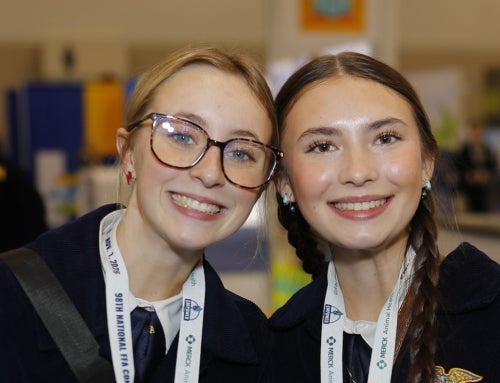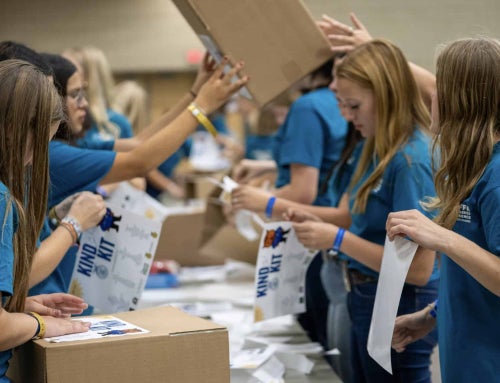Cargill is a proud sponsor of the National FFA Foundation.
Increasing awareness of the global and technological importance of agriculture and its contribution to our well-being is essential to FFA’s mission. At Cargill, where we are committed to helping the world thrive, those things are important to us, too. We are continuously working alongside key partners and influencers across our supply chains to improve water sustainability in agriculture. In 2050, there will be more than 9 billion people in the world, and we believe agriculture can meet the rising demand for food. We partner with farmers to advance entrepreneurial solutions to increase productivity and incomes, promote sustainable agriculture and strengthen communities.
More than 50 percent of water used in U.S. beef production is dedicated to irrigating the row crops that have become feed for cattle. Cargill recently launched a project with The Nature Conservancy and Nestlé Purina, aimed at reducing the environmental impact of row crop irrigation in Nebraska by providing farmers across the U.S. with a cost-effective technology solution and training. Using first-of-its-kind smart weather sensors created by Arable Tech Labs, Inc., the program can help save up to 2.4 billion gallons of irrigation water over the next three years, which in turn, reduces water usage in the overall beef supply chain.
2.4 billion gallons of water is equal to the amount of water 7,200 houses will use over three years.
This project enables farmers to make more informed irrigation decisions. Participants of the program will attach Arable crop and weather sensors to the tops of 13-foot poles and place them in the middle of their crop fields. These sensors will collect hourly measurements on crop health and climate, providing real-time field conditions. There will also be technology attached to each of the sprinklers that irrigate the fields.
How does the technology work? All the information will be sent to an app on the farmer’s phone. The app will be able to communicate with the irrigation sprinklers, so farmers will be able to turn the sprinklers on or off right from their phone. Traditionally, farmers would have to drive out to each field and inspect the soil and crops before turning the sprinkler on or off. Now, farmers can make smarter, quicker irrigation decisions because they have more official data and a simple push of a button. We want to protect our natural resources for future generations and we know that FFA does, too. The data will be tracked and recorded so progress can be reported periodically over the next three years.
Why Nebraska? Nebraska was chosen for this project because it has the largest number of irrigated land acres and the second largest cattle population in the U.S. Most of the irrigation water in the state comes from the Ogallala Aquifer, one of the world’s largest aquifers! It provides water to 20 percent of the wheat, corn, cotton and cattle produced in the U.S. It is also the main water supply for people throughout the High Plains region.












